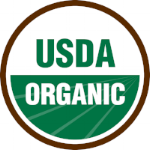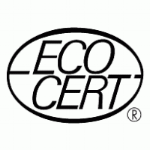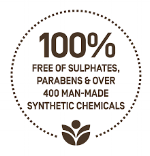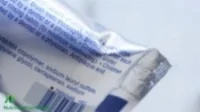Ingredients to look for and those to avoid
Here at Everly Grace Whole Beauty, we take our ingredients seriously. We believe that just as no two people have the same bodies, no two people have the same skin. Just as the products we sell all have different ingredients, we customizes each treatment, nutrition plan and practice to meet our client’s needs. Because let's face it, who doesn't want to feel beautiful inside and out?
Shopping for skin care products can be overwhelming and confusing. Sometimes one product will work in the short term but isn’t sustainable long term. Or maybe, that product wasn’t ever right for your skin type. EGB will always recommend products during or after a facial, but we wanted to provide some tools to use as a guide.
“The cosmetics, shampoos, lotions and other products we put on our bodies can be just as harmful as anything we put in them. Ingredients found in face washes, sunscreens and more have been linked to everything from hormonal disruptions to cancer, and what’s worse is that they go directly into your bloodstream when applied to the skin or hair. While there are certainly lots of studies with different perspectives on this topic, everyone can agree that using more natural products, is the safest bet for you and the environment.” says Hello Glow.
We’ll simplify things even further for you by breaking down common ingredients into the top 5 to avoid and the top 5 to look for.
Here are our 5 Ingredients to look for:
1.) USDA Organic:
If you only looked for one label, this would be it. Memorize that USDA organic logo as it’s always a safe bet. Products formulated with certified organic ingredients, which dramatically reduces residue from pesticides, unnecessary chemicals, and synthetic fertilizer in our products. While there is no certification for "natural" ingredients, organic ingredients are regulated by the USDA.
There are 4 classifications for organic:
100% Organic: The product contains only organically produced ingredients and is permitted to display the seal.
Organic: The product contains at least 95% organically produced ingredients and is permitted to display the seal.
Made With Organic Ingredients: The product contains at least 70% organic ingredients but is not permitted to display the seal.
Less than 70% Organic Ingredients: Products are not permitted to use the term "organic" anywhere on the packaging (and cannot display the seal) but are allowed to identify organically produced items in the ingredient list.
Example USDA Organic Brands: Juice Beauty, Natropathica, and Eminence.
2.) Natural
Use this one with caution! “All Natural” or “Natural” labels do not have nearly as much regulation as USDA organic. Companies can put the word Natural on a label without much testing or regulation. Products might have plant-derived ingredients that are highly processed and potentially even harmful.
“But the “natural” claim can be genuine. Botanicals like aloe, chamomile, shea butter, beeswax, and essential oils are all examples of natural ingredients with a ton of benefits for hair and skin—even when not technically organic. A product could also include a few truly organic ingredients, which would be denoted in the ingredients list.” said Kate Canary of birchbox.com. So if you see the word “Natural” that’s a sign to dig deeper into the label, it could still be a great product.
Example Natural Brands: Burts Bees, Aveeno and Aveda
3.) Ecocert
All Naturopathica products and ingredients are audited and certified by Ecocert, the largest and oldest independent natural and organic cosmetic certification body. Adding the Ecocert seal to a Naturopathica product ensures that it has gone through a rigorous review process, from ingredient sourcing and formulation to manufacturing and packaging.
The Ecocert Standard guarantees:
All ingredients are derived from renewable resources and manufactured with environmentally friendly processes.
A minimum of 50% of natural ingredients are certified organic.
An audit of all raw materials, formulas and labels.
Example Ecocert Brands: Natropathica
4.) Holistic
”The term holistic, sometimes referred to as wholistic, is the philosophy and practice of healing that has to do with constantly keeping the whole body (meaning the physical body, the mind and the spirit) at the highest level of total wellness. This concept draws from the universal natural laws that state a whole is made up of the sum of all of its parts and that the parts cannot function properly if the whole is not functioning properly. Topical products that claim to be holistic are characterized by containing almost 100 percent natural ingredients such as herbs, plant extracts, phytonutrients and antioxidants, and essential oils. Ingredients for holistic products, whether topical or internal, aim to be sourced from all-natural, organic, cruelty-free, wildcrafted, sustainably grown/processed, and often vegan origins.” from dermascope.com
Example Holistic Brands: doTERRA
5.) Looking for these terms is usually a good idea: 'free of parabens' or 'free of synthetic fragrance and dyes’
While seeing these words 'free of parabens' or 'free of synthetic fragrance and dyes’ on the front of a product, its still worth a look at the ingredient list to double check to ensure what you’re buying is pure. Parbens would appear on a label as propylparaben, isopropylparaben, butylparaben and isobutylparaben. The phthalate commonly used in fragrance products is diethyl phthalate. A good rule of thumb for reading ingredient labels is that if you can’t pronounce it, you probably shouldn’t buy it.
Example “free of…” Brands: Honest and Love Beauty and Planet.
Here are our 5 Ingredients to avoid:
1.) Triclosan and triclocarban
Triclosan is basically something antibacterial. If you see the word, antibacterial, you know it has triclosan. Triclosan is a bacteria-killing chemical used in some toothpastes, liquid hand soaps, body washes, clothing, cutting boards and other household goods. It has been shown to interfere with thyroid signaling and male and female sex hormone signaling. Triclocarban is the active ingredient in some antibacterial bar soaps.
Found in: toothpaste, deodorant, antibacterial soap
2.) Oxybenzone
Oxybenzone is one of the highest-risk chemicals found in sunscreen. It acts like estrogen in the body, alters sperm production in animals and is associated with endometriosis in women. Studies on cells and laboratory animals indicate that oxybenzone and its metabolites may disrupt the hormone system. Opt for sunscreens with zinc oxide or titanium oxide or avobenzene instead like Juice Beauty SPF 30 Sport Sunscreen.
Found in: sunscreens - often seen in Banana Boat and Coppertone
3.) Polyethylene/PEGs
Just as you wouldn’t scrub plastic bags on your face to wash it, you should avoid polyethylene, because it’s basically plastic. Those tiny plastic beads in face or lip scrubs and exfoliating washes are made from polyethylene. Polyethylene has been noted as a skin irritant and should never be used on broken skin. Polyethylene beads in scrubs and body washes also are not filtered by our sewage systems, meaning they can collect pollutants and travel into waterways, where they’re consumed by fish and marine animals. All water that goes down the drain at our house, eventually ends up in streams, lakes and oceans. If you’re looking to buy a scrub of any sort, be sure to check the ingredient list for polyethylene! You’ll be happy to know the Juice Beauty Exfoliating Cleanser uses jojoba beads to gently exfoliate and cleanse.
Found in: Clean & Clear morning burst facial scrub, Clearisil Ultra Rapid Action Face Scrub.
4.) Parabens
The FDA acknowledges several studies linking parabens, which mimic estrogen, to breast cancer, skin cancer and decreased sperm count, but has not ruled that it is harmful. According to the European Commission’s Scientific Committee on Consumer Products, longer chain parabens like propyl and butyl paraben and their branched counterparts, isopropyl and isobutylparabens, may disrupt the endocrine system and cause reproductive and developmental disorders. Look for ingredients with the suffix “-paraben” as well—paraben-free products will be labeled as such.
Found in: makeup, moisturizer, shaving gel, shampoo, personal lubricant and spray tan products
5). Sodium lauryl sulfate
SLS has been shown to cause or contribute to: skin irritation, canker sores, disruptions of skin’s natural oil balance and eye damage. It is also widely believed to be a major contributor to acne (especially cystic acne) around the mouth and chin.
Found in: shampoo, body wash, foundation, face wash, mouthwash and toothpaste





